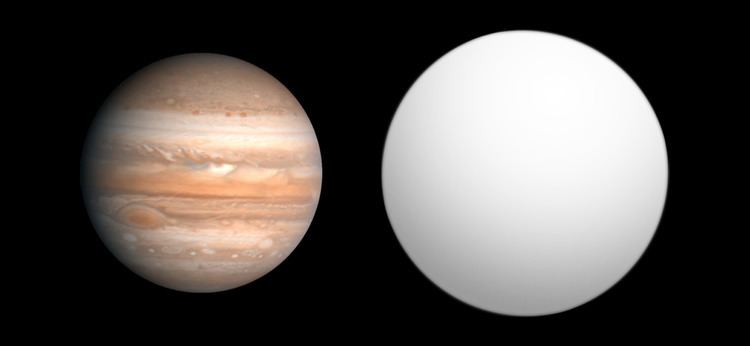Discovery date 2007-05-02 Discovery status Published | ||
 | ||
Other detection methods Radial velocity,Orbital phase reflected light variations | ||
HAT-P-2b is an extrasolar planet detected by the HATNet Project in May 2007. It orbits a class F star, (bigger and hotter than the Sun), located about 370 light-years away in the constellation Hercules. Every 5 days 15 hours, it crosses directly in front of the star as viewed from Earth.
Contents
Orbit and mass
The planet's mass has been estimated to be 8.65 times that of Jupiter, while its diameter, at 135,978 km (84,493 mi), is 0.951 times Jupiter's. Its small size, despite the bloating of the planet's atmosphere, is caused by the strong gravity of the planet. This indicates its mean density is twice that of Earth and its surface gravity approximately 24 times that on Earth, almost equal to the Sun. The orbit is very eccentric, ranging from 4.90 million to 15.36 million miles from the star.
In addition to heat from its primary star, tidal heating is thought to have played a significant role in this planet's evolution.
Rotation
As of August 2008, the most recent calculation of HAT-P-2b's Rossiter–McLaughlin effect and so spin-orbit angle was that of Winn in 2007 but Loeillet has in 2008 disputed it. For Winn this is +1 ± 13 degrees.
It has been suggested that there is a second outer planet perturbing HAT-P-2 b, although thus far, this has neither been proven or disproven.
